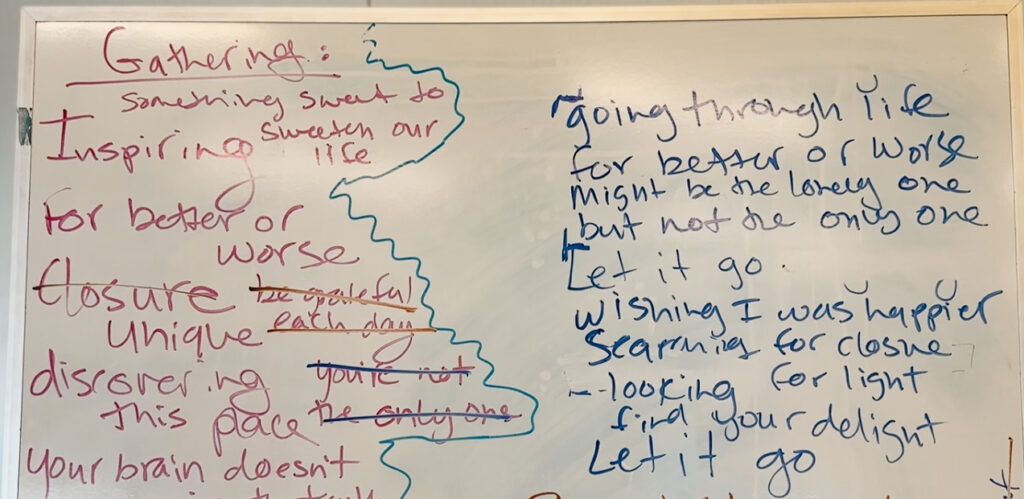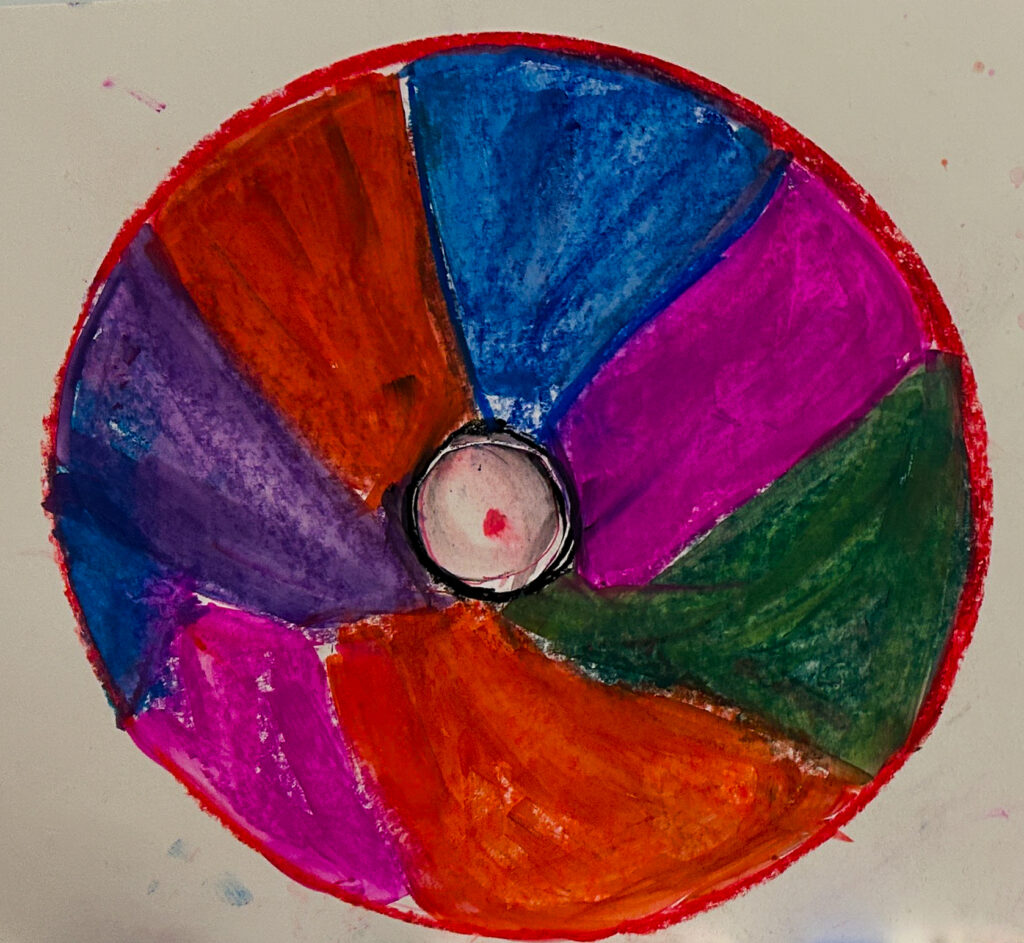Beyond Words: Healing Through Art & Music Therapy

Older adults facing depression, anxiety, and isolation are discovering new ways to heal at Jewish Family Service LA. Through a visionary pilot in partnership with Cedars-Sinai, JFSLA has introduced structured art and music therapy groups tailored to the needs of adults aged 55 and older. These services go far beyond recreational activities; they offer clinically grounded interventions that support emotional wellness when words aren’t enough.
The program was launched in early 2025 at the Jonah Goldrich and Felicia Mahood Senior Centers and finds participants from across JFSLA’s wrap-around services—some are homebound and referred by case managers responding to urgent needs like food insecurity and loneliness. Others attend our on-site congregate meals or arts and wellness classes. A clinical screening determines eligibility, assessing not just mental health but essential factors like transportation, access to food, and caregiver support.
What sets this model apart is its seamless integration into broader support services, ensuring each client is met with compassion, clinical care, and a path toward healing. “Clients may enter through therapy but often stay connected through non-clinical programs like cultural events, fitness classes, or art groups,” said Lika Litt, JFSLA’s program director for the Jona Goldrich and Felcia Mahood Multipurpose Centers. For many, this first step opens the door to community and purpose. A gateway to healing.

Registered and Board-certified art therapist Rita Canny, ATR-BC, LMHC, creates a space for emotional transformation by providing creative tools to all her clients as they enter her group session. Each ten-week group includes up to ten participants who engage in a progression of creative modalities: watercolor sketching, doll-making, magazine collage, mandala construction, and more. But it’s not about the art. It’s about what the art releases and reveals.
Canny’s art sessions begin with grounding exercises, such as the “scribble technique,” where participants respond to color and movement to reflect how they’re feeling. From there, structured prompts invite deeper exploration. Every material—whether soft pencil or flowing watercolor—is chosen for its emotional tone. Participants are always given choices, helping them assert agency in a world where control can feel lost.
“Often the real shift happens after the art is made,” says Canny. As clients reflect on their work, they begin to recognize changes in mood, thought patterns, or perspective. These moments of insight support neuroplasticity—the brain’s capacity to form new connections—and offer proof that healing is possible.
For one participant, switching from paint to colored pencil made the difference between shutdown and success. For another, shaping a doll representing their past helped them process longstanding grief. Several expressed pride in their finished pieces and interest in public exhibitions. “They want to be seen,” says Canny. “And they want to share.”

“Depression and anxiety thrive in isolation. Music breaks through that.”
– Bette Miller
Music Therapist
Music therapy at JFSLA is led by Board-certified music therapist Bette Miller, who takes a similarly layered approach. Structured as 9-10-week groups, the sessions offer a spectrum of musical engagement: lyric analysis, instrument play, songwriting, guided listening, and singing in community. No experience is required. Instruments are accessible and welcoming. What matters is the connection.
“Depression and anxiety thrive in isolation,” says Miller. “Music breaks through that.”
In the first cohort, every participant reported reduced symptoms of depression and anxiety. But beyond the numbers are the stories: One client, a retired professional musician mourning the death of a partner, hadn’t picked up an instrument in months. After several weeks, they joined a group songwriting session, playing an instrument as others sang along. “It felt really good,” they said afterward. “I’m looking forward to next week.”
Another client, with no musical background, found their voice through drumming. Others shared playlists that marked key chapters of their lives, and shared lyrics to songs that reflected their own lives. Each experience affirmed that music—like art—is a powerful access point to memory, identity, and hope.
Creative therapy is not a luxury; it’s a clinical necessity. These sessions are woven into a comprehensive care model that includes case management, social work, and individual therapy. The result is a deeply human experience. Clients enter feeling unsure, often isolated. They leave with a renewed sense of belonging. Miller observed, “You can see their shoulders lift after a few weeks. The spark returns. They start imagining what’s next.”
The pilot runs through 2026, with plans to scale if continued funding is secured. The program reflects a broader commitment to de-stigmatizing therapy and expand access for older adults. Plans for grief support and reminiscence therapy are already underway.
For now, the art speaks. The music resonates. And for older adults navigating change, grief, or solitude, these programs are more than therapeutic interventions. They are invitations to rejoin the world—with color, with rhythm, and with renewed connection.